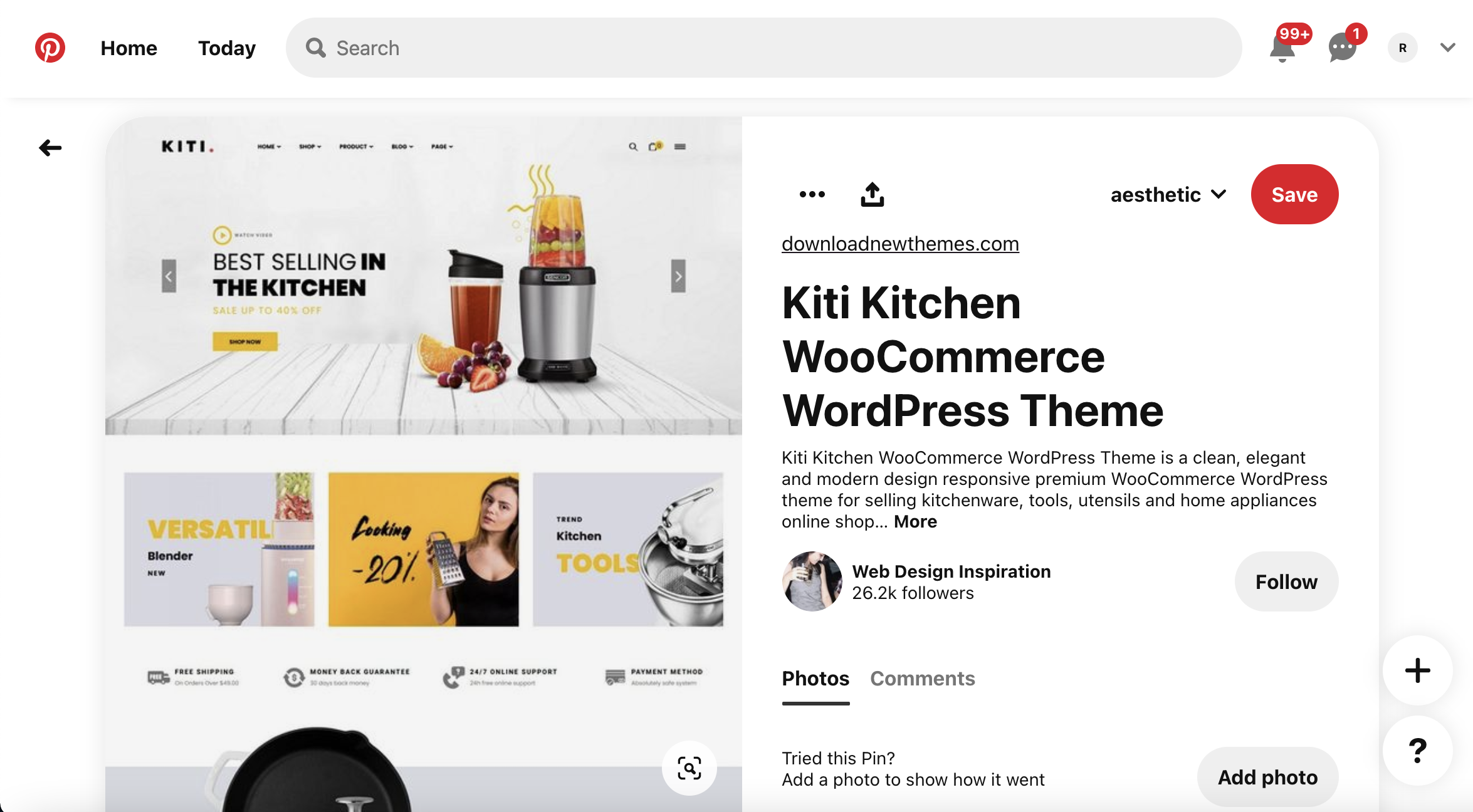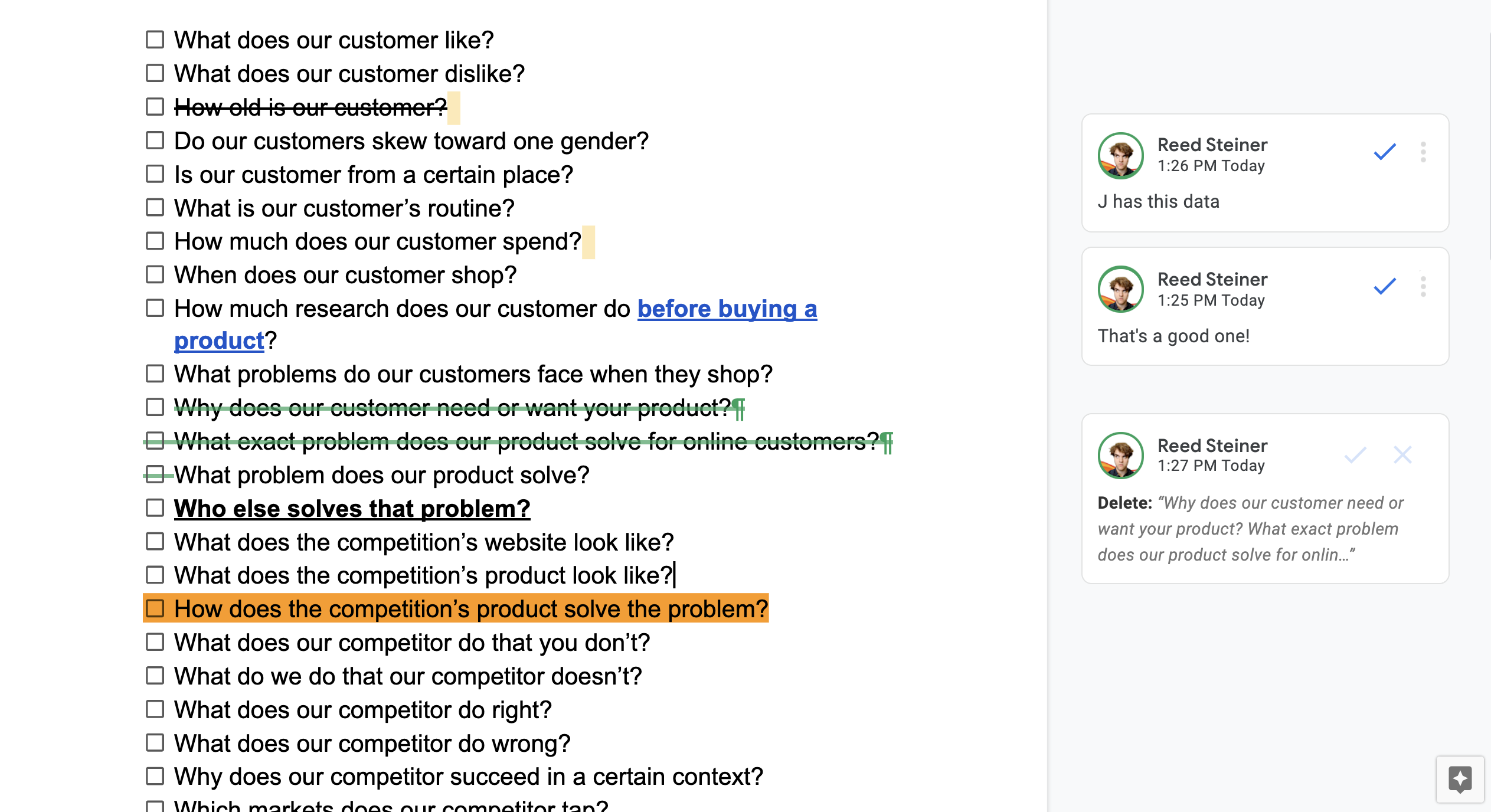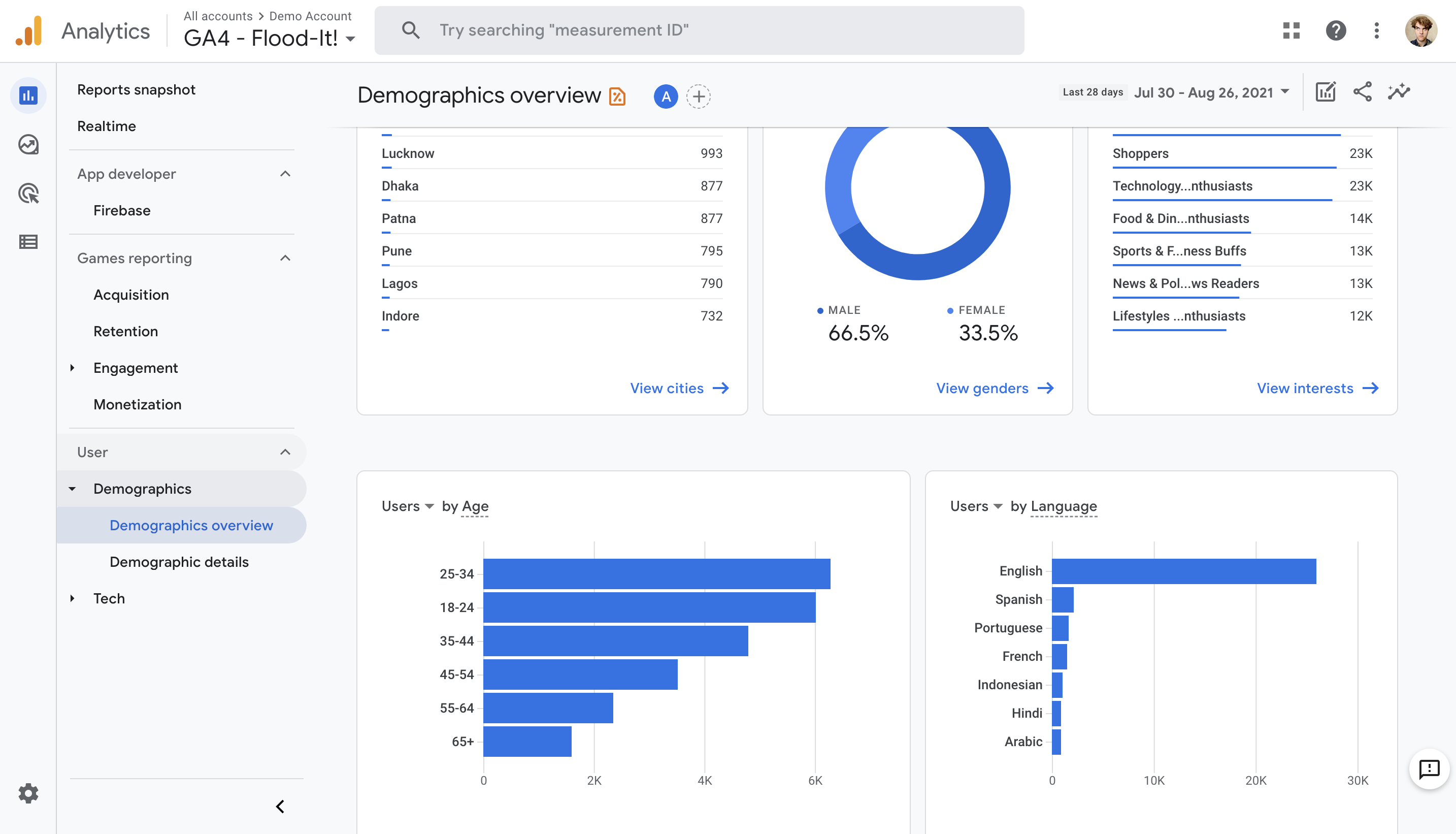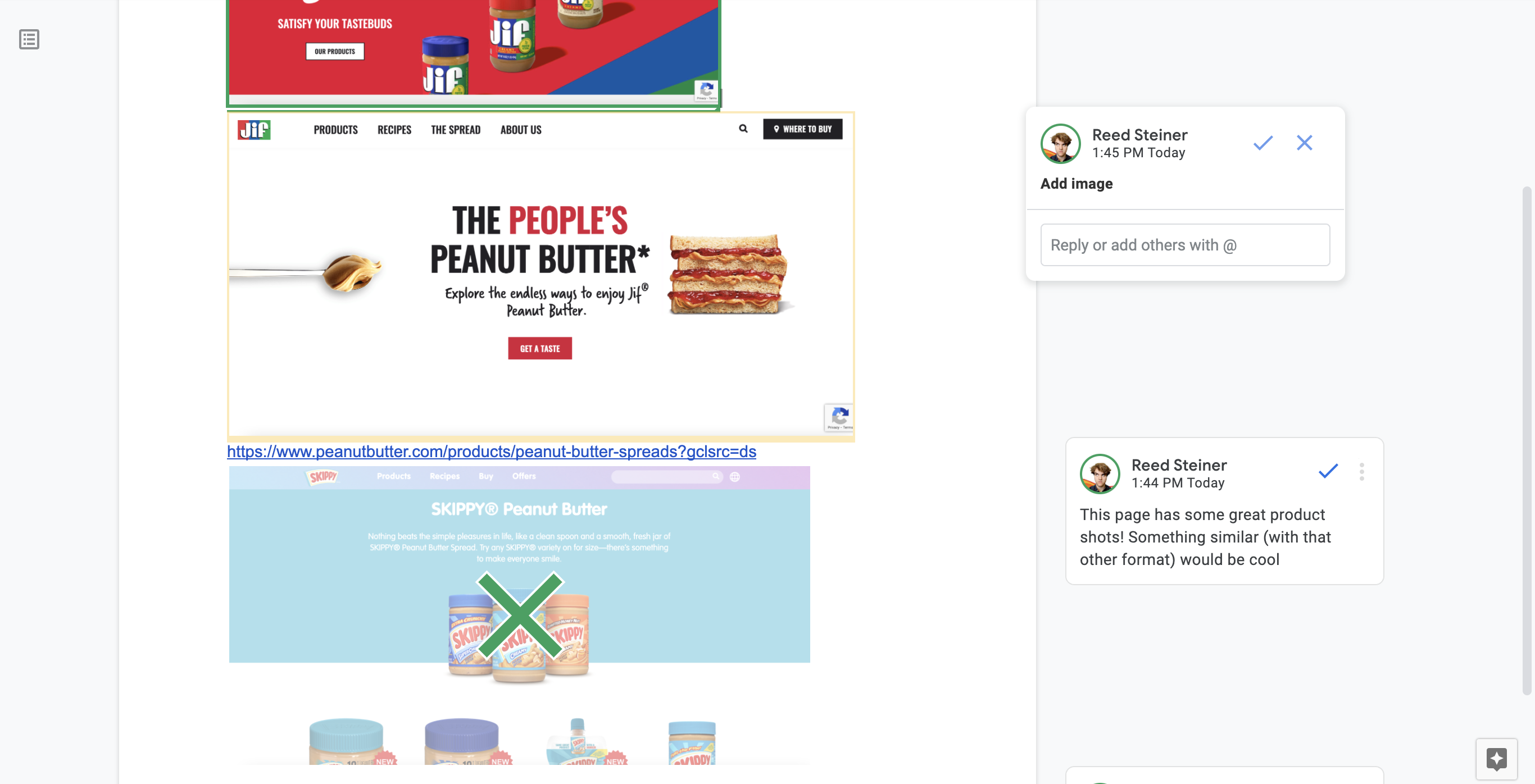Market research is perhaps the most underrated stage in building an eCommerce website. Everyone thinks they do enough research, but they rarely do. Good research should include strong, empirical steps.
- Delving into competitor analytics
- Analyzing similar brands
- Testing and retesting ideas constantly
Research should take about as long as building the website itself. Anything shorter lets down your brand and your customers.
Market research isn’t just underrated: it’s vital. But why?
Why conduct market research?

Research is hard. Why bother?
Because knowing your competition helps you beat them. If you conduct great market research, you’ll gain a massive competitive edge, especially in the following areas.
- Discover new customers: Competitors may have discovered customers you’d never considered. Market research helps you discover and serve these customers better.
- Invigorate existing customers: Researching reveals new customer behaviors that could make your services better than ever before.
- Set better goals: Realistic goals always come from realistic data. Understanding the marketplace helps you plan ahead better than ever before.
- Expand: Exploring your market landscape may reveal new opportunities for expanding your business. Do your research and find out what other brands are doing — maybe you can do it better.
These are only a few reasons why market research is important, but there are many more. In fact, building an ecommerce store without research is like painting with your eyes closed: it makes success nearly impossible.

But where should an online merchant begin? Most people start with a solid research goal.
Research Questions

All research starts with a question. Without it, you’ll get side-tracked very easily.
If you’re building an eCommerce store, some questions that may need answering include
- Who are my biggest competitors?
- What design elements and functionality do potential customers expect?
- How much are customers willing to pay for this service?
Of course, there are infinite possibilities for research questions. Try brainstorming as many as you can and list them on a nice, big document.

Once your list is plenty lengthy (and annotated), review what you have. A good research question is hard to answer. That’s why you’re doing research: to figure it out so you can plan your website better.
Can’t think of any good research questions? Try splitting your research into narrower topic areas.
Research topic 1: Customers

Always begin by figuring out who your customers are.
This step is crucial even if you run a brick-and-mortar business. Online customers have different motivations and preferences, so ask some of the following questions.
- What does your customer like?
- What does your customer dislike?
- How old is your customer?
- Do your customers skew toward one gender?
- Is your customer from a certain place?
- What is your customer’s routine?
- How much does your customer spend?
- When does your customer shop?
- How much research does your customer do before buying a product?
- What problems do your customers face when they shop?
- Why does your customer need or want your product?
- What exact problem does your product solve for online customers?
Even if you can answer these questions, can everyone on your team? If not, research may clear things up.
It’s okay to change your target audience online! You should be meeting a narrow group of people at their exact needs. To do that, you need to know everything about them.
But research extends far beyond customers (most customer research comes from website analytics). Competitive research is the cornerstone of strategic planning.
Research topic 2: Competition
You may be the best, but you aren’t the first.
Even if you offer a one-of-a-kind product, other companies are competing for the exact same customers. Ask yourself a few of the following questions.
- What problem does your product solve?
- Who else solves that problem?
- What does the competition’s website look like?
- What does the competition’s product look like?
- How does the competition’s product solve the problem?
- What does your competitor do that you don’t?
- What do you do that your competitor doesn’t?
- What does your competitor do right?
- What does your competitor do wrong?
- Why does your competitor succeed in a certain context?
- Which markets does your competitor tap?
- Where could your competitor expand?
- How does your competitor impact the market?
If you can’t answer one of these questions (or the answer is a bit foggy) do some research.
Remember: the competitor isn’t someone with a similar solution: it’s someone who solves the same problem. Don’t waste your research on a company that uses a similar solution to solve a different problem — that’s a different market.
Once you’ve established some of the market groundwork, you can look at websites in more detail.
Research topic 3: Design

Design is crucial for any successful website — especially in eCommerce. A single tool could make or break the entire store.
So why leave it to chance? Asking the right research questions will make the website look amazing.
- What colors and design elements show up in your industry?
- What design elements commonly occur in competitor websites?
- Which accessibility regulations impact your business?
- What usability roadblocks could prevent purchases most often?
- How do customers categorize your products in their heads?
- Do customers respond well to coupons and sales?
- What social proof incentivizes your customers the best?
- What branding is most appealing to your customers?
This list is not at all exhaustive. Countless questions could exist. Just brainstorm as many questions as you can. Then, research questions whose answers could . . .
- open opportunities
- remove roadblocks
- set goals
- provide value to customers
Only once you’ve defined your questions can you continue to the rest of the research phase.
Methodology

You have some questions — awesome! Next, you’ll need a strategy for finding the answers.
The best strategy is to guess an answer you think is right, then think of how someone could prove that guess wrong. If you can’t think of how someone could prove your guess wrong, you need to revise the question.
Let’s say you sell peanut butter. Your question is “who is my audience,” and your guess could be “my audience is parents.”
If someone wanted to disprove your guess, they could find data on who buys the most peanut butter, or they could interview your customers.
Great! Now just pick whichever works best for your needs and try to prove yourself wrong. If you can’t prove yourself wrong, try to prove yourself right.

Looking at the data, you’ll notice that most of the audience is female. While “parents” is more accurate, moms may make more useful buyer personas
That’s the general rule of thumb: try to disprove your guess until the truth reveals itself.
But many details vary from question to question. How do you make your experiments more accurate?
User research methods

User research is nothing without the user. After all, they are your priceless subject.
While many methods work, nearly every method involves user data. Your best options include
- Interviews
- Polls
- User analytics (if you already have a website)
This is not an exhaustive list, of course, but it should guide your decision making process.
To decide what method to use, list the type of data you need next to each question.
Need a story? Set up some interviews!
Need an opinion? Interviews and polls work great.
Need larger data? Polls and analytics are your friend.
For competitor research, you’ll need a different plan of action.
Competitor research methods

Competitors can be scary, but they can also be the source of a wealth of information
Discover what they’re doing right and, more importantly, what they’re doing wrong. Then, learn from their successes and failures without going through the same trial-and-error process.
To conduct competitor research, try these methods.
- Explore the entire website
- Go through the checkout process
- Write down your favorite and least favorite features
- Compile a list of competitor websites for inspiration
Many methods may work for one question. No matter what, you should start with a document or spreadsheet. Fill it with links to competitor websites, screenshots, and information.

Simply gather inspiration and learn from their mistakes. It may be time consuming, but it’s worth every second.
Other research methods
Users and competitors are far from the only sources of information that may be useful to your company.
If none of the above methods work well for your research question, try to narrow your question until you figure out what data you need.
- Do you need a generalized answer (like analytics) or a specific one (like a specific customer story)?
- Who is the “main character” of your research question? What could they have to say?
- What part of the website will this research question help improve?
- How do competitors answer this question?
- Is this question worth asking?
- What do your employees think?
Many questions can be quickly answered online. Try exploring websites similar to what you have in mind, then looking at competitors. If neither source answers your question, explore Pinterest and other social media. You’ll often find great eCommerce inspiration very quickly.

When in doubt, communities answer questions brilliantly. Explore the communities at your disposal.
Reading your results
You’ve got the data . . . what do you do with it? The answer depends strongly upon your methodology.
Interviews
Interviews are essentially stories. Record them and write down the details, then write down the most significant findings.
Polls and Analytics
Data needs interpretation. Write down the most important details and explain how it answers your research question.
Competitor research
A SWOT analysis (strengths/weaknesses/opportunities/threats) is priceless.
Fill out the SWOT chart and share the results with your team.
Design research
Compile the designs you like into a mood board or folder. It will give your designers a visual vocabulary to work with. Then get ready — the fun part begins soon after.
Tying it all together
Market research isn’t easy, but you can break it down into bite-sized pieces. With a little planning, this daunting task becomes more manageable.
- Ask a good question. Research fundamentally answers a question. Ask something testable, scientific, and useful.
- Test your question. Once you have a question, make a guess and try to prove it wrong. Consider what type of data you need to prove and disprove your hypothesis.
- Interpret results. Data is useless on its own. Assemble your findings into a digestible format and explain to your team how it answers the research question. Use this answer to set better goals for your team.
Research is hard, but don’t worry. There are lots of resources available to make the job easier.
Shopify’s guide contains a list of amazing resources for market research, including statistics, research reports, apps, and more.
You can also explore Fyresite’s eCommerce web design guides, such as this post about keeping people on your ecommerce website longer.

Research may be hard, but it’s not impossible, and every ounce of effort gives you precious data to inform major business decisions for the better.
 Jason Turnquist
Jason Turnquist 

